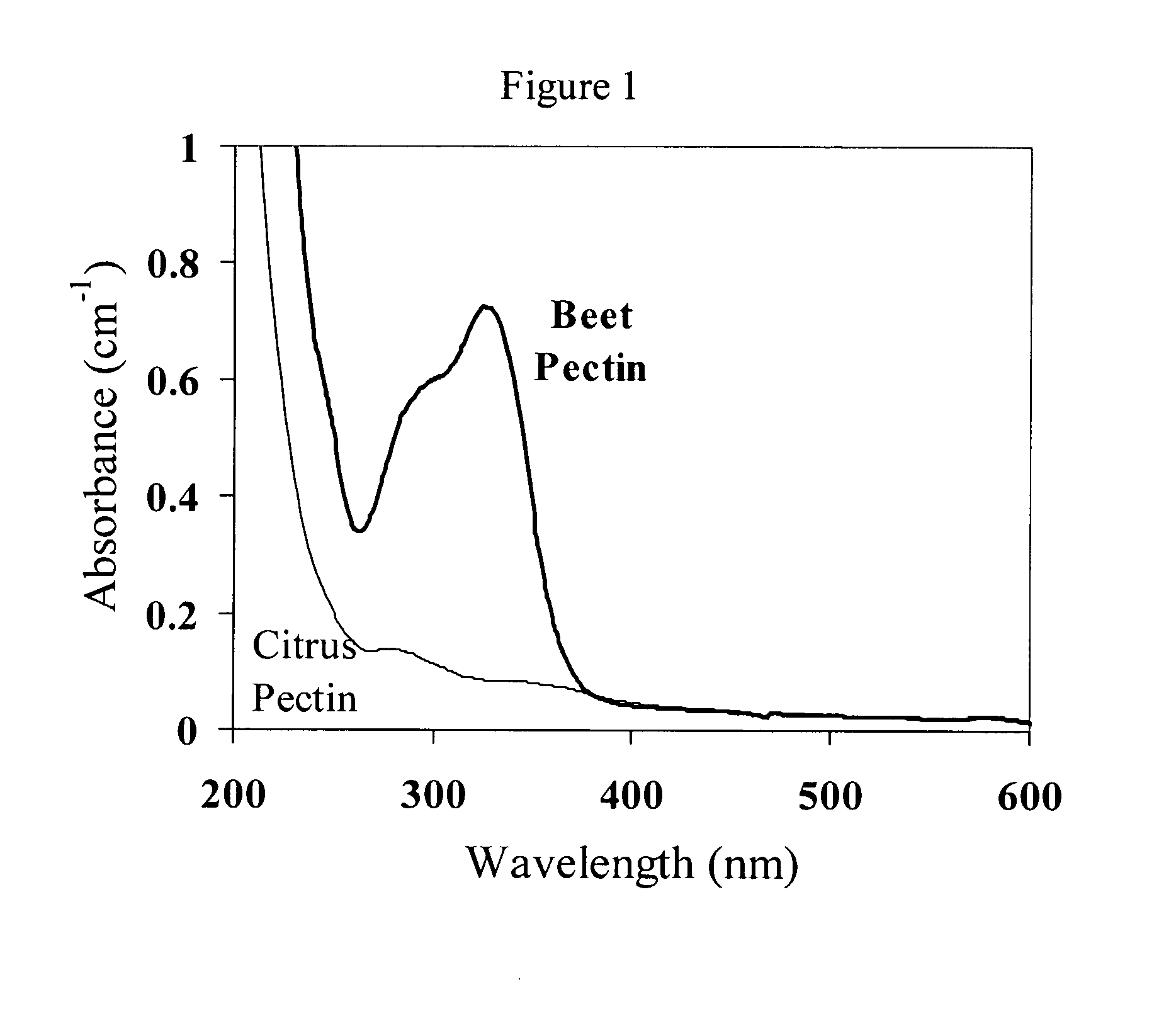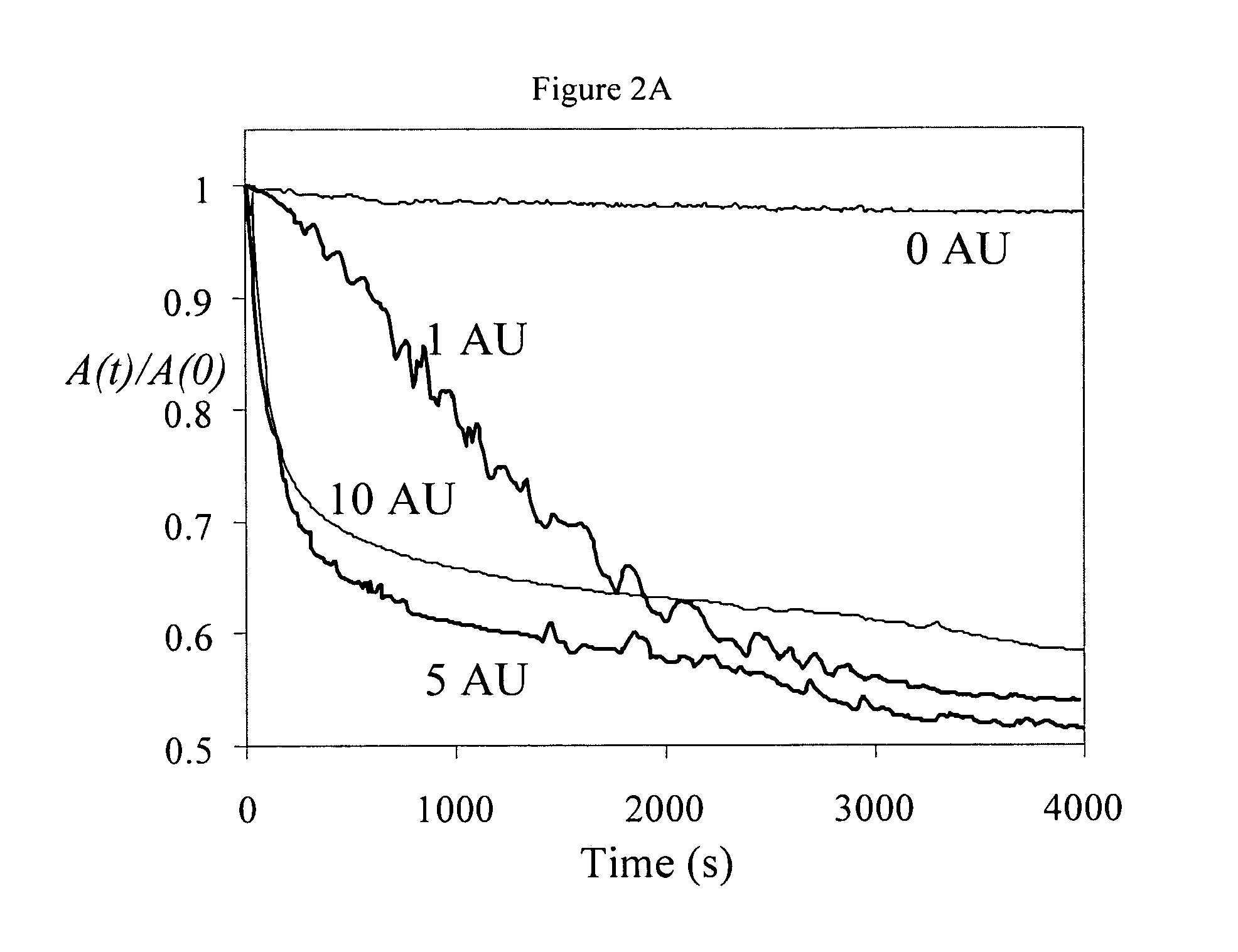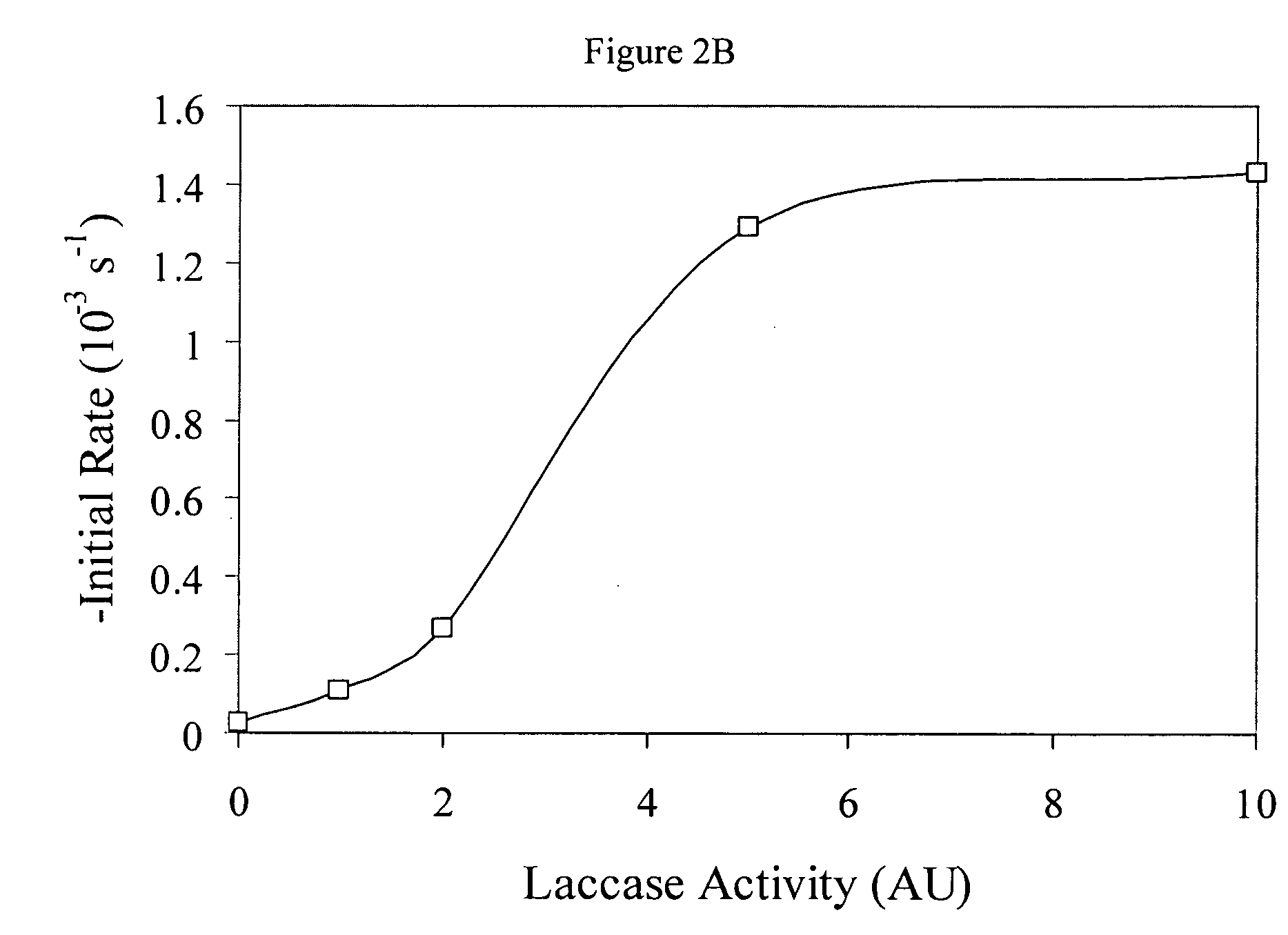Cross-Linked Biopolymers, Related Compounds and Methods of Use
a biopolymer and cross-linked technology, applied in the field of cross-linked biopolymers, can solve the problems of only holding together interfacial protein-polysaccharide complexes, protein-coated lipid droplets are often susceptible to aggregation, and can only be used successfully as emulsifiers in a limited range of materials, so as to improve the adhesion to the dispersed phase, prolong the range of chemical, thermal and/or mechanical conditions, and improve the physical stability of such
- Summary
- Abstract
- Description
- Claims
- Application Information
AI Technical Summary
Benefits of technology
Problems solved by technology
Method used
Image
Examples
example 1
Solution Preparation
[0051]Stock buffer solutions were prepared by dispersing 5 mM disodium hydrogen phosphate in distilled water and then adjusting the pH to either 4.5 or 7.0 using 1 M HCl and / or 1 M NaOH. Citrus pectin and beet pectin solutions were prepared by dispersing 1 wt % powdered pectin into buffer solutions at pH 7.0. An emulsifier solution was prepared by dispersing 0.5 wt % β-lactoglobulin powder into buffer solution at pH 7.0. Enzyme solutions were prepared by dispersing 0.5 wt % laccase powder into buffer solutions (pH 4.5 and 7.0). A sodium azide solution (an antimicrobial) was prepared by dispersing 0.04 wt % of its powder into buffer solution (pH 7.0). Each solution was then stirred for at least two hours to ensure complete dissolution of the materials.
example 2
Characterisation of Laccase Activity
[0052]Establishment of Laccase Activity: UV-visible Measurements. Information about the ability of laccase to cross-link pectin molecules was obtained from UV-visible absorption measurements (UV-2101 PC, Shimadzu Corporation, Japan). Initially, absorption spectra of 0.1 wt % pectin (beet and citrus) dissolved in aqueous phosphate buffer solutions were measured at pH 4.5 and pH 7.0, using buffer solutions containing no pectin as blanks. A maximum in the absorption spectrum was observed at a wavelength of 325 nm for beet pectin, which was attributed to the presence of the ferulic acid groups. Consequently, absorption measurements at this wavelength (A325nm) were used to establish the ability of laccase to cross-link the pectin. Different amounts of laccase (0 to 10 AU) were added to samples of beet pectin (0.1 wt %) at pH 4.5. The oxidation of ferulic acid was then followed by measuring the absorbance at 325 nm at 25° C. for one and a half hours.
example 3
[0053]Establishment of Laccase Activity: Pectin Gelation. A qualitative indication of the ability of laccase to cross-link pectin molecules was obtained by examining the enzymes influence on the gelling properties of polysaccharide solutions. Solutions of citrus and beet pectin (0.5 wt %) were prepared in stock buffer solution at pH 4.5, then different amounts of laccase were added (0 to 10 AU) and the resulting solution was stirred for 30 minutes. The gelation state of the system was determined by visual inspection of the reaction mixture. Periodically, the vessel containing the reaction mixture was tilted and the system was considered to have gelled when it did not deform under its own weight. The “gelation time” was then defined as the time required for a self-supporting gel to be formed.
[0054]The above experiments indicated that 5 AU of laccase were sufficient to promote cross-linking of the ferulic acid (see above): this amount was used in subsequent experiments.
PUM
| Property | Measurement | Unit |
|---|---|---|
| pH | aaaaa | aaaaa |
| pH | aaaaa | aaaaa |
| absorbance | aaaaa | aaaaa |
Abstract
Description
Claims
Application Information
 Login to View More
Login to View More - R&D
- Intellectual Property
- Life Sciences
- Materials
- Tech Scout
- Unparalleled Data Quality
- Higher Quality Content
- 60% Fewer Hallucinations
Browse by: Latest US Patents, China's latest patents, Technical Efficacy Thesaurus, Application Domain, Technology Topic, Popular Technical Reports.
© 2025 PatSnap. All rights reserved.Legal|Privacy policy|Modern Slavery Act Transparency Statement|Sitemap|About US| Contact US: help@patsnap.com



